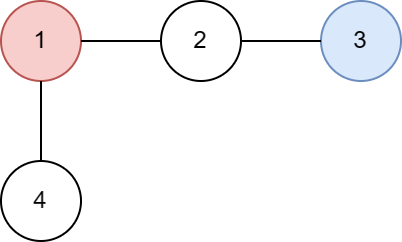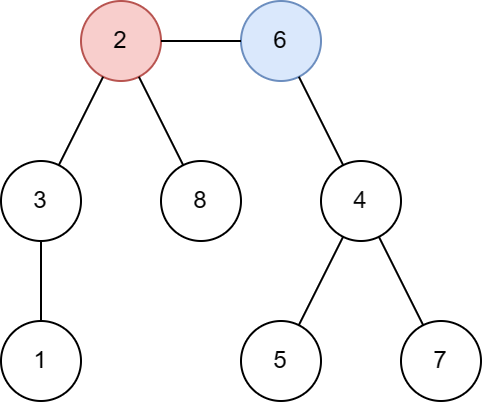CF1823F.Random Walk
普及/提高-
通过率:0%
AC君温馨提醒
该题目为【codeforces】题库的题目,您提交的代码将被提交至codeforces进行远程评测,并由ACGO抓取测评结果后进行展示。由于远程测评的测评机由其他平台提供,我们无法保证该服务的稳定性,若提交后无反应,请等待一段时间后再进行重试。
题目描述
You are given a tree consisting of n vertices and n−1 edges, and each vertex v has a counter c(v) assigned to it.
Initially, there is a chip placed at vertex s and all counters, except c(s) , are set to 0 ; c(s) is set to 1 .
Your goal is to place the chip at vertex t . You can achieve it by a series of moves. Suppose right now the chip is placed at the vertex v . In one move, you do the following:
- choose one of neighbors to of vertex v uniformly at random ( to is neighbor of v if and only if there is an edge {v,to} in the tree);
- move the chip to vertex to and increase c(to) by 1 ;
You'll repeat the move above until you reach the vertex t .
For each vertex v calculate the expected value of c(v) modulo 998244353 .
输入格式
The first line contains three integers n , s and t ( 2≤n≤2⋅105 ; 1≤s,t≤n ; s=t ) — number of vertices in the tree and the starting and finishing vertices.
Next n−1 lines contain edges of the tree: one edge per line. The i -th line contains two integers ui and vi ( 1≤ui,vi≤n ; ui=vi ), denoting the edge between the nodes ui and vi .
It's guaranteed that the given edges form a tree.
输出格式
Print n numbers: expected values of c(v) modulo 998244353 for each v from 1 to n .
Formally, let M=998244353 . It can be shown that the answer can be expressed as an irreducible fraction qp , where p and q are integers and q≡0(modM) . Output the integer equal to p⋅q−1modM . In other words, output such an integer x that 0≤x<M and x⋅q≡p(modM) .
输入输出样例
输入#1
3 1 3 1 2 2 3
输出#1
2 2 1
输入#2
4 1 3 1 2 2 3 1 4
输出#2
4 2 1 2
输入#3
8 2 6 6 4 6 2 5 4 3 1 2 3 7 4 8 2
输出#3
1 3 2 0 0 1 0 1
说明/提示
The tree from the first example is shown below:
 Let's calculate expected value E[c(1)] : - P(c(1)=0)=0 , since c(1) is set to 1 from the start.
Let's calculate expected value E[c(1)] : - P(c(1)=0)=0 , since c(1) is set to 1 from the start.
- P(c(1)=1)=21 , since there is the only one series of moves that leads c(1)=1 . It's 1→2→3 with probability 1⋅21 .
- P(c(1)=2)=41 : the only path is 1→12→0.51→12→0.53 .
- P(c(1)=3)=81 : the only path is 1→12→0.51→12→0.51→12→0.53 .
- P(c(1)=i)=2i1 in general case.
As a result, E[c(1)]=i=1∑∞i2i1=2 . Image of tree in second test  Image of tree in third test
Image of tree in third test 